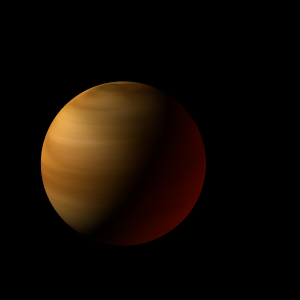|
|
Space Astro
|
Info for exoplanet "Paone-raxca"
| Scientific (actual) data |
|---|
| Planet | 2M1510A a |
| Planet status | Confirmed |
| Planet mass | 40 |
| Radius | 1.57 |
| Orbital period | 20.902 |
| Semi major axis | 0.063 |
| Orbit eccentricity | 0.31 |
| Inclination | 88.5 |
| Discovered | 2020 |
| Updated | 2020-03-24 |
| Publication | Published in a refereed paper |
| Detection type | Primary Transit |
| Mass detection type | Radial Velocity |
| Radius detection type | Primary Transit |
| Alternate names | 2MASSW J1510478-281817 a |
| Right ascension | 227.7° |
| Declination | -28.3° |
| Star distance | 36.6 |
| Wikipedia article | 2M1510A a |
Back
| |
| Fictional info (?) |
|---|
| Suggested name | Paone-raxca |
| Planet type | Huge cold gas giant |
| Paone-raxca has been known to astronomers since antiquity. This planet is named after the deity Paone-raxca, the bringer of dreams.
The planet telescopically displays the complete range of phases, similar to Venus and the Moon, as it moves in its inner orbit relative to @STARNAME, which reoccurs over the so-called synodic period approximately every 104 days.
It is radically different from Earth in other respects. It has the densest atmosphere of the two huge cold gas giants, consisting of huge amounts of carbon dioxide.
As the closest planet to Sianda-li, Paone-raxca has been a prime target for early extra solar exploration.
The latest probe to visit the planet is Pioneer, which entered into orbit around Paone-raxca after a tricky journey. |
| Atmosphere | Carbon dioxide | 75% |
| Neon | 22% |
| Nitric oxide | 2% |
| Atmospheric pressure | 0.0011 bar |
 |
| No known satellites |
| Google search for Paone-raxca |
|
Website by Joachim Michaelis
|
|
|
|